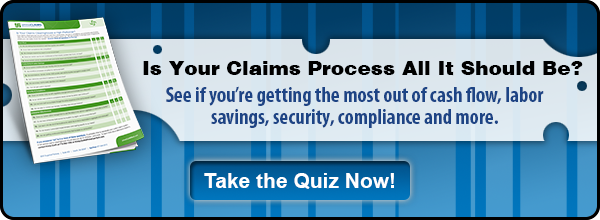To somewhat freshen up a term that can become stale due to overuse or, possibly, misuse, I would like to spin “business intelligence” (or business analytics) and convert it to “intelligent business.” Sometimes, playing with words (which is fun for me at times) can reshape our paradigms. “Business intelligence” implies the use of systems and processes which simplify the retrieval of data and its conversion into actionable information readily accessible to decision makers in real time[1]. But business intelligence goes beyond technology tools; BI is indeed "intelligent business" decision making. But first, let’s talk about BI’s/Intelligent Business benefits.
“business intelligence” (or business analytics) and convert it to “intelligent business.” Sometimes, playing with words (which is fun for me at times) can reshape our paradigms. “Business intelligence” implies the use of systems and processes which simplify the retrieval of data and its conversion into actionable information readily accessible to decision makers in real time[1]. But business intelligence goes beyond technology tools; BI is indeed "intelligent business" decision making. But first, let’s talk about BI’s/Intelligent Business benefits.
BI’s Key Performance Indicators reflect the organization’s mission and objectives.
I like the concept of each organization focusing its decision making on its mission and objectives. BI helps significantly to do just that, because executives and management can identify and align Key Performance Indicators (KPIs) to the broader organization’s mission, goals, strategies, and culture as well as to each of its business units’ objectives. The magic of BI is that the information displayed can be rolled up or drilled down to specific levels of interest and responsibility within the organization. Let’s say that the COO, who likely would never log into his or her organization’s clinical application, can view a consolidated corporate view or an expanded view of all regions’ or facilities’ clinical KPIs. Likewise, a department head can view his or her specific KPIs benchmarked against department-specific goals.
BI fosters quicker data-driven solutions.
Yes, successful decisions are often based on “hunches”, but in today’s LTPAC world executives and managers have to make and report on specific data-driven KPIs. Before technology truly enabled BI, decisions were often hunches based on information manually extracted from old data, assuming that the information was possibly a trend. It was like trying to drive a car exclusively looking in the rearview mirror. But for businesses to function intelligently with BI, the information needs to be organized and displayed in ways that fosters comprehension, timely quality decisions, and, may I add, accountability. BI also enables managers and executives to retrieve and view data in ways that are specific to their responsibilities and needs.
BI crosses data silos for multi-dimensional views.
Let’s take labor management, for example. For years LTPAC providers have analyzed labor hours and dollars based on hours and dollars per patient per day. Manually, that would mean reconciling time card totals with the census tabulated and reported by the nursing department. However with business-critical enterprise-class software, providers are now using time and attendance applications for labor hours, payroll applications for labor dollars, and clinical applications for the census in aggregate, by payer type, by clinical unit within the facility, and so forth. But each application may be from a different vendor. To get them to talk to each other and to consolidate and convert that data into actionable information instantly requires data mining and BI technology.
BI displays convenient and useful information
BI can also display the information in ways useful to the decision makers. I’ve hinted at this throughout this blog, but the magic to BI is its intelligent use. It starts with identifying and aligning KPIs to the organization’s mission, objectives, strategies, and, yes, culture (but that is a topic for another day). Once selected, KPIs determine how data is be collected, combined into useful information, and displayed in consumable formats. Because the KPI-driven information is available in real time and actionable, executives can make data-driven decisions right now. Now that’s intelligent business.
[1] Lest we get off on a tangent here, I am going to use Merriam-Webster as my source for defining “real time”: “the actual time during which something takes place <the computer may partly analyze the data in real time (as it comes in) — R. H. March>.” (Italics added) In this instance, BI generates information in real time as soon as the system has access to the data (as it comes in). In the case of most of our BI customers, that means refreshing the data available in their respective data warehouses several times a day – as frequently as each customer wants to have its data updated.
/Prime-Care-Technologies-Logo.png?width=191&height=55&name=Prime-Care-Technologies-Logo.png)


 No one likes rejection - neither an amorous suitor, an eager job seeker, nor a presidential aspirant. But when it comes to love, employment, politics, or money, well, no pun intended, money trumps them all. And the root to your positive cash flow lies squarely in your ability to collect the revenue owed. Most provider revenue comes from third-party payers through the medium of claims. But occasionally, notwithstanding their best efforts to submit clean claims, providers may receive rejections due to undiscovered errors. The key is to turn those rejections into payments - quickly. Here are a few tips to consider and to implement
No one likes rejection - neither an amorous suitor, an eager job seeker, nor a presidential aspirant. But when it comes to love, employment, politics, or money, well, no pun intended, money trumps them all. And the root to your positive cash flow lies squarely in your ability to collect the revenue owed. Most provider revenue comes from third-party payers through the medium of claims. But occasionally, notwithstanding their best efforts to submit clean claims, providers may receive rejections due to undiscovered errors. The key is to turn those rejections into payments - quickly. Here are a few tips to consider and to implement
 “Measure twice, cut once.” How often I have heard that truism and when heeded, it has saved me countless hours of redoing, perpetual visits to the local hardware store, and unnecessary spending. My bank account thanks me. My wife is grateful. And the results at least meet expectations. But measuring twice and cutting once has a much broader application beyond do-it-yourself projects.
“Measure twice, cut once.” How often I have heard that truism and when heeded, it has saved me countless hours of redoing, perpetual visits to the local hardware store, and unnecessary spending. My bank account thanks me. My wife is grateful. And the results at least meet expectations. But measuring twice and cutting once has a much broader application beyond do-it-yourself projects. Receiving actionable information and making decisions are time neutral and may or may not make a difference. There’s something missing. Think of it this way. Information that is easy to interpret and timely gives executives the power to make correct decisions to take opportune action to generate positive results – quickly. It’s more than a matter of reports, it’s the quality and timing of the information.
Receiving actionable information and making decisions are time neutral and may or may not make a difference. There’s something missing. Think of it this way. Information that is easy to interpret and timely gives executives the power to make correct decisions to take opportune action to generate positive results – quickly. It’s more than a matter of reports, it’s the quality and timing of the information.